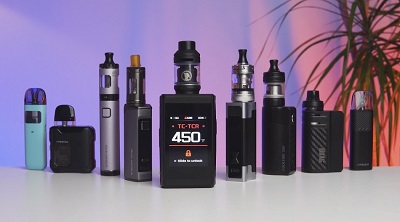
Step-by-Step Guide to Calculate Nicotine Strength Safely
How to Calculate Nicotine Strength for DIY E-Liquid
Mixing your own e-liquid (DIY) can be rewarding: lower cost, full control of flavour profiles, and customised nicotine levels. But one of the most critical and potentially dangerous—steps is calculating how much nicotine to add. Mistakes can lead to unsafe concentrations or ineffective blends. In this guide, we’ll walk you step by step through everything you need to know: from the core formula, to variations (salts vs freebase), to safety protocols and troubleshooting.
Why Nicotine Strength Matters
Before diving into math, it’s important to understand why nicotine strength is so pivotal in your DIY e-liquid:
User satisfaction & cravings
If nicotine is too weak, you might vape excessively and remain unsatisfied. If too strong, you may have throat irritation, side effects, or an unpleasant experience.
Throat hit, absorption, and device compatibility
Freebase nicotine tends to deliver a stronger throat hit, particularly at higher concentrations. Nicotine salts allow smoother delivery at higher mg levels, ideal for low-power devices.
Also, devices differ in how much nicotine they can vaporise efficiently, so your target strength should consider your hardware.
Safety and limits
High-concentration nicotine is toxic if mishandled. Many jurisdictions (e.g. under TPD in the UK) restrict sale of nicotine liquids above 20 mg/mL (2%) for consumer products.
When mixing, you must avoid accidentally overconcentrating your mix.
Flavour balance and dilution
Nicotine and base (PG/VG) volumes displace flavour volume. If your nicotine volume is substantial, you’ll reduce room for flavouring or base liquids, impacting taste and consistency.
Because of these factors, you want to be precise and confident in your calculations. A small arithmetic slip can disproportionately affect the result.
Core Formula for Nicotine Calculation
At the heart of the process lies a simple ratio formula:
Nicotine Volume to Add (mL):
Nicotine Volume (mL) =
(Desired Strength in mg/mL × Total Final Volume in mL) ÷ (Strength of Nicotine Base in mg/mL)
Or expressed in symbols:
Vnic = (Starget × Vtotal) ÷ SbaseWhere:
Vnic= Volume of nicotine base to add (mL)Starget= Desired nicotine strength (mg/mL)Vtotal= Total volume of e-liquid (mL)Sbase= Strength of your nicotine stock (mg/mL)
Example Calculation (Freebase)
Suppose you want to make 50 mL of e-liquid at 6 mg/mL, using a 100 mg/mL nicotine base:
Vnic = (6 × 50) ÷ 100
Vnic = 300 ÷ 100
Vnic = 3 mLSo you’d need 3 mL of your 100 mg/mL nicotine base. The remaining 47 mL is made up of flavorings and PG/VG base liquids.
Another Example
Want 30 mL at 3 mg/mL using a 50 mg/mL base?
Vnic = (3 × 30) ÷ 50
Vnic = 90 ÷ 50
Vnic = 1.8 mLCheck via percentage method
Sometimes nicotine strength is given as a percentage. The conversion is easy:
1 mg/mL = 0.1%So 6 mg/mL = 0.6%, 12 mg = 1.2%, etc.When you use percentage on your label, convert to mg/mL first using:
S_base (mg/mL) = Percent × 10Then apply the core formula. Many online calculators handle this conversion automatically.
Adjustments, Variations & Advanced Considerations
Accounting for flavourings and base (PG / VG)
When mixing, your total volume (V_total) is composed of:
Nicotine volume (V_nic)flavourings (V_flav)PG and VG base (V_pg, V_vg)Possibly dilutants (e.g. distilled water, ethanol) if used
Thus:
V_pg + V_vg + V_flav + V_nic = V_totalIn practice, you’ll choose a PG/VG ratio (e.g. 50/50, 30/70, 20/80) and allocate volume accordingly, subtracting nicotine and flavour volumes first, and then distributing the rest between PG and VG.
Some tools (e.g. Steam Engine mixer) will do this balancing for you.
Nicotine salts vs freebase
The same formula works for both, but note that:
- Nicotine salts tend to feel smoother, so people may target higher mg levels
- Freebase tends to give a stronger “hit” at the same mg
- The chemical form may slightly impact absorption kinetics, though the volumetric calculation remains the same
Dealing with very high base strengths or non-linear mixing (e.g. shortfills)
If your base strength is extremely high (e.g. 200 mg/mL), or you are using a shortfill (nicotine-free bulk e-liquid you’ll top up with nic shots), you may have to iteratively solve the mixing equation, because adding nicotine increases total volume slightly.
For instance, consider adding x mL nicotine to an existing 100 mL shortfill to reach 3 mg. The total becomes (100 + x) mL. The equation:
S_base × x = S_target × (100 + x)Solve for x. These problems are more involved but are common in advanced DIY mixing. Forum users often post these algebraic forms.
Use of online calculators and validation
Given the potential for error, many DIY mixers prefer to use online calculators (or apps) as a sanity check. Use our calculator below to measure your nic levels.
DIY Nicotine Calculator
Nicotine Volume to Add:
— mL
Use at least two independent tools to cross-check your result. If they differ, re-evaluate your inputs.
Practical Workflow for Calculation & Mixing
Here’s a step-by-step workflow you can follow:
- Decide your final volume (e.g. 30, 50, 100 mL).
- Choose your target strength (e.g. 3, 6, 12 mg/mL).
- Note your nicotine base strength and form (mg/mL, freebase/salt, PG/VG or ratio).
Compute nicotine volume using the formula:
Vnic = (Starget × Vtotal) ÷ SbaseSubtract flavouring volume — if you plan e.g. 10% flavour, that’s 0.1 × V_total.
Remaining volume = V_total – (V_flavour + V_nic)Divide leftover between PG and VG according to your desired ratio (accounting for the PG/VG in your nic base).
Mix carefully: add flavour, then nicotine, then PG/VG. Shake thoroughly, optionally “rest” for steeping.
Lab-test or check with a second tool to validate concentration.
Label your final bottle: date, strength, ratio.
Safety First: Handling Nicotine Responsibly
Because nicotine is toxic at high concentrations and can be absorbed through skin or inhalation, you must adopt rigorous safety practices. Here are non-negotiables:
- Always wear gloves (nitrile), goggles, and protective clothing when handling nicotine.
- Use precise measuring tools (syringes, graduated cylinders) — avoid eyeballing.
- Work in a well-ventilated space (a fume hood or under extraction is ideal).
- Keep nicotine and raw materials in sealed, labeled containers out of reach of children or pets.
- Use secondary containment (tray or plastic bin) to catch spills.
- Dispose of waste safely, not down the drain.
- Check your math twice (or more) before mixing.
- Start small, for your first few mixes, work with modest volumes until you gain confidence.
- Neglecting safety can lead to serious poisoning or contamination.
Common Mistakes & Troubleshooting
Here are a few pitfalls new DIY mixers often encounter, and how to avoid them:
| Problem | Likely Cause | Solution |
|---|---|---|
| Final nicotine is weaker than intended | Underestimated nicotine volume, or using wrong base strength | Re-check formula; re-calculate using independent tool |
| Too strong / harsh throat hit | Overshot nicotine volume, or your tolerance is lower than assumed | Dilute with plain base, re-check math, lower target strength |
| Little room left for flavour | Nicotine or base volume too large relative to total | Choose a higher base strength (so you need less volume) or reduce flavour proportion |
| PG / VG ratio off | Did not account for PG/VG content in nicotine base | Subtract PG/VG component of nicotine, then top up accordingly |
| Calculation mismatches from tools | Inconsistent inputs or rounding errors | Ensure all tools use mg/mL units, clear flavour or base inputs, and reconcile rounding |
Move over, Obi-Wan, there's a new Master in town. In the realm of vape clouds and coils, where e-juice flavour reigns supreme and watts whip like desert winds, fear not, fledglings, for The Boss has arrived.
Forget flashy tricks and fancy footwork – The Boss's vape wisdom runs deep, seasoned by years of inhaling and exhaling. He's seen trends come and go, mods rise and fall, but his taste for excellence remains untarnished, a beacon in the ever-evolving vape-o-sphere.


